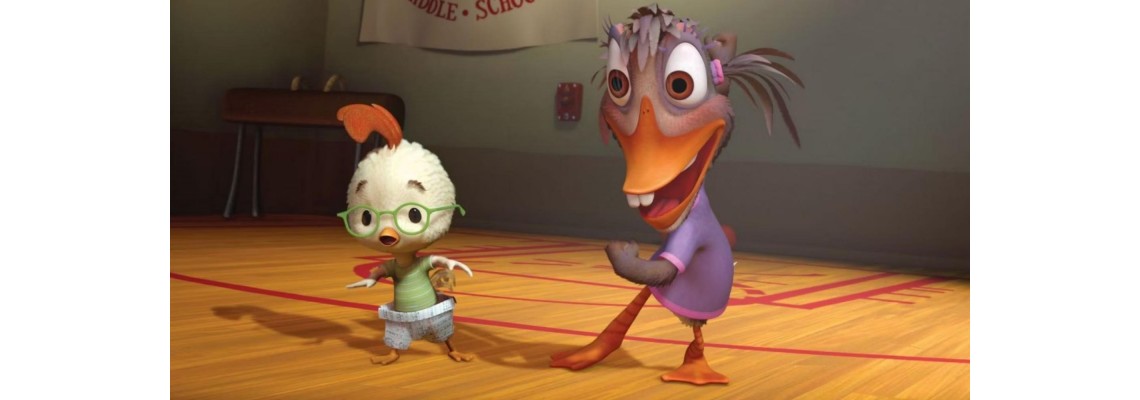Duck From Chicken Little Unveiling the Quirky Charm of Abby and Her Impact

Abby Mallard in Chicken Little: How a “supporting” duck became a
cult icon
When people remember Chicken Little (2005), they often recall the
alien twist or the father–son arc. But the character who gives the film its
pulse is Abby Mallard—the plain-spoken friend who keeps the
story honest. Disney’s film pages describe Chicken Little as a
misfit-crew adventure about saving a town from panic and misunderstanding; Abby
is the human (well, duck) center of that crew, the one character who
consistently pushes for empathy and straight talk (Disney Movies;
Walt
Disney Animation Studios). Disney MoviesWalt Disney Animation Studios
What the film set out to do—and where Abby fits
Chicken Little was Disney Feature Animation’s first fully
in-house CG feature, a technology and identity pivot after the
hand-drawn 1990s. Contemporary coverage framed it that way: the studio
“rediscovered its legacy through 3D” while figuring out how character-driven
warmth survives a new pipeline (Animation World Network). Abby sits right on that fault
line—animated with early-2000s CG tools yet written like an old-school Disney
truth-teller: she urges conversation over spectacle and reconciliation over
rumors. Computer Graphics World’s production report groups her with
the “misfit friends” who steady the plot when the town spins out (CGW, “The Sky’s the Limit”). AwnComputer Graphics World
Original take: Abby is an early-CGI example of a
now-familiar archetype—the relationship coach sidekick. She isn’t the
joke machine; she’s the conscience. While Chicken Little chases external
validation, Abby keeps turning the story back to repairing the bond
with his father. That specific emotional labor is what gives the third
act any weight at all.
Design that argues a point (without a makeover)
Abby’s look—awkward, asymmetrical, unapologetically “uncool”—doesn’t bend
toward perfection as the film progresses. That’s deliberate. Instead of a
magical glow-up, the story grants her authority without aesthetic
change, which quietly subverts the old fairy-tale promise that inner
worth must be “proven” by outer beauty. Popular explainers have even noted
that, despite her name, she may be read as not a mallard at all
but a swan-coded character; whether you buy that or not, it speaks to how
viewers search for deeper logic in her design (ScreenRant). Screen Rant
Original take: In an era when CG sidekicks often existed to
relieve tension, Abby’s model does something rarer—she names tensions
(miscommunication, shame, guilt) and asks the protagonist to face them. That’s
unusual for a supporting comic design circa 2005, and it’s why she lingers.
Reception vs. afterlife: why Abby stuck around even if the film didn’t
Critically, Chicken Little has hovered near the bottom of Disney
feature rankings in aggregate write-ups; that’s well documented in roundups of
the canon by mainstream outlets (Business Insider). Yet Abby keeps resurfacing in fan spaces,
merch cycles, and nostalgia threads. The reason is simple: she supplies the most
durable value the film offers—an ethic of empathy—while the plot’s
bigger swings (aliens, camouflage panels) feel of their time. Business Insider
The sequel that wasn’t—and what that reveals about Abby
There was almost a direct-to-video follow-up, Chicken Little
2: The Ugly Duckling Story, centered on a love triangle where Abby
considers a beauty-product makeover. The project advanced to reels before
leadership changes ended DisneyToon’s sequel pipeline. That arc—documented in Tod
Carter’s interview about the cancelled sequels—would have pulled Abby
toward a conventional “external transformation” ending, precisely what her
original characterization resists (Animated Views interview with Tod Carter; also covered in
industry pieces on canceled sequels at Collider
and CBR).
animatedviews.comColliderCBR
Original take: Ironically, canceling that sequel preserved
what’s unique about Abby: she doesn’t “earn” love by changing how she looks;
she already influences because she tells the truth with care.
So what makes Abby a cult figure?
Not box-office dominance. Not meme quantity alone. Abby is “cult” because
she represents a counter-promise inside a mid-2000s studio
experiment: that even when the spectacle is loud and the rendering tools are
new, a story still lives or dies on whether someone in it can speak plainly and
kindly. She does. And the film is better for it.
Smart details at a glance
·
Where to watch: Chicken
Little streams on Disney+ (Disney+ title page). Disney+
·
Voice of Abby Mallard: Joan
Cusack (full credits on IMDb). IMDb
·
Context: Disney’s first fully
in-house CG feature; see contemporaneous coverage on the studio’s CG transition
at AWN. Awn
·
Production note: Trade/tech
press placed Abby among the “misfit friends” who give the plot human stakes (CGW). Computer Graphics World
FAQ
Was Abby always conceived as this kind of character?
Not exactly. The broader film evolved significantly during Disney’s CG pivot;
Abby’s final role—as a candid emotional anchor—fits the studio’s push to make
character warmth read through new tools, per contemporaneous industry reporting
(AWN). Awn
Is Abby a mallard?
The film never states her species beyond the name. Some explainers argue she’s
designed more like a swan; treat that as interpretation, not canon (ScreenRant). Screen Rant
Was a sequel planned around Abby?
Yes—an Abby-centric direct-to-video sequel made it to reels before Disney
leadership shut down most DisneyToon sequels. Sources detail the plot direction
and the decision to cancel (Animated Views; Collider).
animatedviews.comCollider
Closing thought: Why Abby matters now.
Rewatch Chicken Little today, and the tech shows its age; the ethic
Abby embodies doesn’t. In a media climate that rewards volume, Abby’s
superpower is clarity with care—naming the hard thing and
asking for a real conversation. That’s why she’s more than a footnote in
Disney’s first CG era. She’s the reason the film still has a heart worth
arguing about. And that’s the kind of quiet influence cult characters are made
of.
